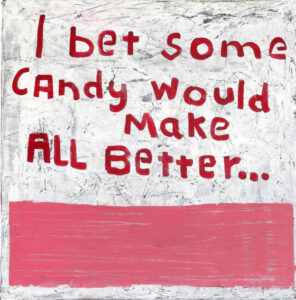For over twenty years, Fondazione Prada has engaged with cinema not merely as entertainment, but as an intellectual arena—an ongoing conversation between image, identity, and ideology. This is not a detour from the foundation’s core cultural mission but its natural extension. Just as Miuccia Prada has consistently challenged fashion to be more than an aesthetic endeavor, her foundation insists that cinema, too, is more than spectacle. “Cinema is for us a laboratory for new ideas and a space of cultural education,” she states—a philosophy that now materializes in a formal, forward-thinking film fund.
This new initiative seeks to rewire the funding pipeline of contemporary cinema, allowing filmmakers—both established and emerging—to take aesthetic and conceptual risks without the burden of market expectations. In a cinematic ecosystem increasingly driven by streaming algorithms, franchise bloat, and metrics of virality, Fondazione Prada’s fund reclaims space for experimentation, subtlety, and pluralism. The result is more than a financial endowment—it is a philosophical gesture: a declaration that the future of cinema lies in its ability to surprise, challenge, and diverge.
The Cinema Within the Institution
Fondazione Prada’s cinematic program has long stood apart from the film initiatives of most cultural institutions. From hosting retrospectives on auteurs like Jean-Luc Godard, Chantal Akerman, and David Lynch to collaborating with directors on site-specific installations, it has treated the moving image as both a subject and a medium—something to be critiqued, examined, and recontextualized. The foundation’s Milan complex even includes a dedicated cinema, designed not as a traditional venue but as an architectural and intellectual extension of the galleries it neighbors.
The new fund grows directly from this terrain. It isn’t a new branch, but a deepening root—a commitment to ensuring that films can still be made on their own terms, by voices that often exist outside traditional production circuits. The goal is not to “support the industry” in a vague, abstract sense. The goal is to challenge it—to provide means for stories that resist simplification, that thrive in ambiguity, and that demand our intellectual and emotional attention.
Curated Risk: A New Model for Selection
At the core of the fund lies a careful balance between structure and freedom. The selection process is entrusted to an ensemble of producers, programmers, and curators who are not only steeped in cinema history but alert to its evolving vocabularies. Leading this effort are Paolo Moretti, former artistic director of Cannes’ Directors’ Fortnight, and Rebecca De Pas, known for her curatorial work with IFFR and the Viennale. This duo embodies the precise synthesis Fondazione Prada aims for—Moretti brings a refined understanding of auteur cinema’s current landscape, while De Pas carries deep experience with radical and formally daring films.
The fund’s inclusivity is structural, not rhetorical. Rather than being limited to certain budget tiers or geographic regions, the call is open to a global cohort of filmmakers at all stages of their careers. The emphasis is not on polish or commercial potential, but on originality of vision. Projects can range from minimalist documentaries to speculative fiction, from personal essay films to experimental montages that defy classification.
What unites them is a commitment to craft—and a desire to engage viewers not as passive consumers but as critical participants in the cinematic experience.
Auteurism Without the Algorithm
In an era where film production is increasingly tethered to the logic of content creation, Fondazione Prada’s film fund strikes a radically different tone. It is a return to the ethos of the auteur—not as a brand or a persona, but as a figure of intellectual and artistic inquiry. The fund positions itself in opposition to the market’s current preference for familiarity, offering a counterweight to the dominance of IP (intellectual property), franchise sequels, and cinematic universes.
This isn’t nostalgia for a bygone golden age of cinema. Rather, it’s an insistence on diversity—of format, of voice, of theme. It is a recognition that films like Apichatpong Weerasethakul’s Memoria or Mati Diop’s Atlantics have as much cultural and emotional resonance as any global blockbuster. In supporting this kind of work, Fondazione Prada joins a growing vanguard of institutions—including Locarno, FIDMarseille, and the Berlinale Forum—that see cinema’s future in its multiplicity, not its monoliths.
By shielding projects from premature market testing, the fund ensures that their makers can operate in a space of invention. And by integrating curatorial voices into the selection process, it cultivates a culture of mentorship and critical dialogue, rather than metrics and monetization.
Cross-Pollination and Artistic Hybridity
One of the more compelling aspects of the initiative is its potential to catalyze creative collisions across disciplines. Fondazione Prada has long excelled at bringing visual artists, architects, musicians, and writers into conversation through its exhibitions and programs. This same ethos is now embedded in its film fund, which encourages submissions that blend cinematic language with other media.
This opens the door for hybrid projects—installations that bleed into cinema, or films that incorporate performance art, digital sculpture, or generative AI. Such works may not fit easily into a festival lineup or a theater schedule, but they challenge the boundaries of film as an art form, and in doing so, expand its possibilities. They invite audiences to experience time, memory, and narrative through a plural lens, breaking down the distinctions between disciplines that have historically remained siloed.
By supporting these cross-medium investigations, Fondazione Prada reinforces the idea that film does not merely reflect culture—it actively reshapes it.
Mentorship, not just Money
The fund doesn’t end at financial support. It is also envisioned as a platform for mentorship and development, particularly for early-career directors. This isn’t a matter of attaching celebrity producers or name-brand workshops, but of cultivating dialogue with curators, editors, and craftspeople who understand the nuances of independent filmmaking.
Workshops, labs, and iterative feedback structures will form part of the developmental pipeline, allowing filmmakers to refine their work in a thoughtful, collegial environment. This reflects the foundation’s understanding of cultural production as process—not just a finished product to be consumed, but a slow, layered evolution of ideas.
For emerging directors, especially those from underrepresented regions or without access to formal film education, this infrastructure is vital. It doesn’t just help them make a film—it helps them make a body of work.
Global Vision, Local Integrity
Though based in Milan, the Fondazione Prada fund has an international outlook. It acknowledges that cinema today is a transnational language, shaped by diasporas, digital distribution, and political migration. Yet it also emphasizes the importance of local specificity—stories that emerge from particular geographies, histories, and dialects.
The fund is especially valuable in an era of cultural homogenization, where the pressure to appeal to broad international audiences often flattens regional nuance. By backing projects that foreground cultural particularity—whether it’s a Kurdish village in the mountains or a São Paulo suburb—the initiative protects the mosaic texture of world cinema.
This global-local axis reflects Fondazione Prada’s larger curatorial philosophy: to hold the universal and the intimate in simultaneous focus. To support films not just for where they will screen, but for how they speak.
A Cultural Reckoning, One Frame at a Time
Cinema is at an inflection point. Streaming has eroded the boundaries between film, television, and digital content. Theatrical exhibition is no longer the dominant mode of release. And traditional funding models, dependent on government support or studio financing, are increasingly precarious.
Against this backdrop, Fondazione Prada’s new film fund is not just welcome—it is necessary. It offers a structural and ethical model for how cultural institutions can engage cinema in a serious way, not merely through retrospectives or festivals, but through active, long-term support of creation.
It treats film as an ecosystem—one that needs sunlight, not spotlights. One that flourishes through care, patience, and challenge.
Cinema as an Act of Imagination
Miuccia Prada’s longstanding commitment to culture has always extended beyond fashion. From the post-human sculptures of Louise Bourgeois to the modernist architecture of OMA’s Torre, the foundation has used its platform to ask questions about the future of art, identity, and aesthetics. This new chapter in film funding continues that tradition.
In offering filmmakers the tools—not just financial, but intellectual—to dream without compromise, Fondazione Prada ensures that cinema can remain what it has always been at its best: a medium of imagination, a vessel for empathy, and a form of resistance.
In a world increasingly saturated by content, the need for cinema that dares to see differently is urgent. This fund doesn’t just support such work—it calls it into being.
No comments yet.








